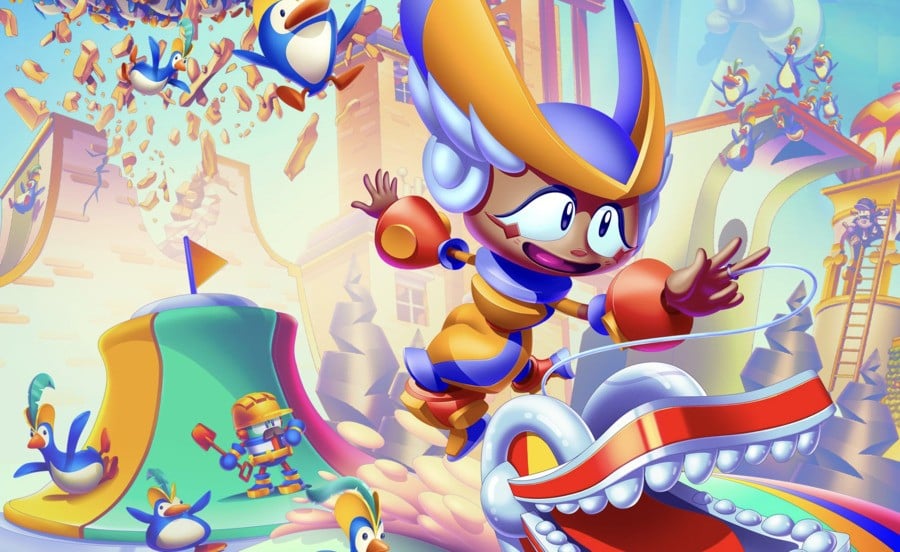
Following up on one of the most beloved entries in the Sonic the Hedgehog franchise is no easy task, but for the ex-Sonic Mania devs at Evening Star, it was a simple case of leaning into their considerable ambition and diving headfirst into the world of 3D.
Announced earlier this year during a Nintendo Direct presentation, the studio's debut title, Penny's Big Breakaway, caused a big stir amongst not only Sonic fans but 3D platforming fans in general thanks to its bold art style and kinetic gameplay. Currently slated for release in early 2024, it's shaping up to be one of the Switch's most promising 3D platformers.
 Watch on YouTube
Watch on YouTubeSubscribe to Nintendo Life on YouTube841k
In fact, it may come as a surprise to learn that Penny's Big Breakaway is the studio's first major foray into the world of 3D. To find out more about how the game came to fruition and what it has in store for players, we sat down to speak with Evening Star's Chief Technology Officer & Game Director Hunter Bridges and Creative Director Christian Whitehead.
Nintendo Life: Can you start with an overview of how Evening Star started out?
Hunter Bridges: Evening Star was founded in late 2018 — November if we’re being exact. It was Christian, Tom Fry (Art Director), Brad Flick (Design Director), Dave Padilla (CEO & Lead Producer), and myself.
We all worked together on Sonic Mania and Sonic Mania Plus; after we finished that project we started looking at our prospects for the future and felt that many doors would open if we were to team up and formally start a studio of our own. With Sonic Mania, there were a lot of different entities working together to create that title, so when we started Evening Star, we really wanted to create a solid new brand that would retain the spirit that went into Sonic Mania and channel it to create more new things for the future.
We spent a couple of years working on our engine tech; when we started the company, we wanted to get into 3D. So we worked on engine tech for a while and ultimately decided to create a brand new IP that would eventually become Penny’s Big Breakaway.
Penny’s Big Breakaway is being created with a new engine called the Star Engine. Can you talk about the differences between this and the Retro Engine?
Christian Whitehead: We’d describe the Star Engine as a companion piece to the Retro Engine [EN: Created by Whitehead and used in multiple Sonic games]. The Retro Engine was very much geared towards 2D pixel art games, targeting a range of fidelity from 8-bit games all the way up to 32-bit. There’s a bit of pseudo-3D stuff in the Retro Engine, like the Special Stages we did in Sonic Mania; they look 3D, but they work completely differently from how a modern 3D game would be authored.
Star Engine’s purpose is to create modern 3D games; it’s been designed from the ground up. Having said that, it still adheres to our principles; we value minimalism, while many other modern engines place heavy emphasis on "AAA" realism and fidelity. For us, we’re interested in non-photorealistic visuals with heavy art styles and bold colours. We created a toolset that’s efficient and designed around those goals.
Retro Engine’s still around if we do make more 2D games in the future, but the Star Engine is the new kid on the block.
Hunter: I would add to that if you recall in the mid-'90s when developers who created wonderful 2D games took the jump over to 3D, our experience in moving from Retro Engine to Star Engine has certainly paralleled some of that.
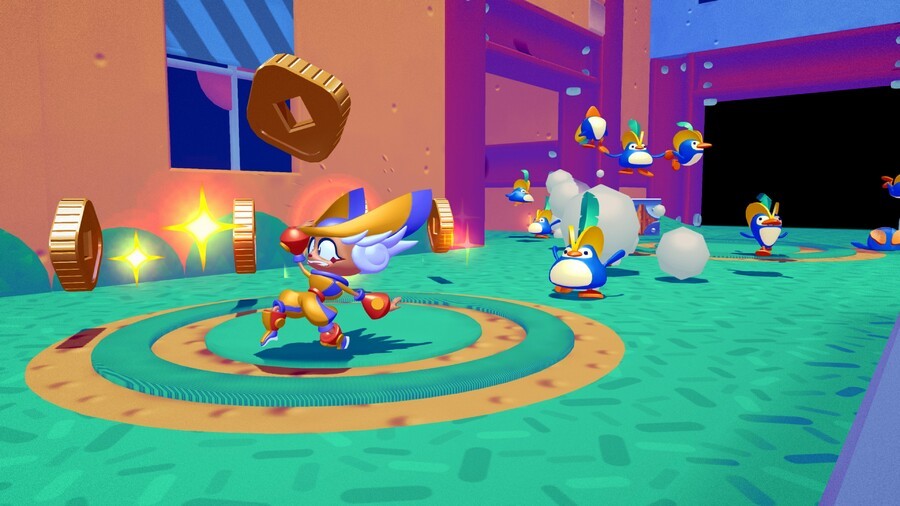
Have you come across any challenges with utilising Star Engine for Penny’s Big Breakaway that you perhaps didn’t experience with your 2D titles?
Christian: Oh yeah, there was a lot of novel tech that we had to invent just in service of creating the levels. With Sonic Mania, we used 2D tiles which get arranged on a grid map; that was the way 2D games were made back in the ‘90s and it was a very easy process; what you see is what you get.
With 3D games, you have what’s commonly referred to as a ‘White Box’ or ‘Grey Box’ phase where the levels are basically blocked out, then an environment artist goes in later and makes a pretty version of the level, so at that point, you’re pretty much locked into the design.
We didn’t really want to work that way; we enjoyed the way that you could continually iterate or tweak the design of 2D games to get the best flow for the characters for the level. With the Star Engine, the challenge was “How can we update the level design and the art that doesn’t require a person to manually alter it constantly?”.
It’s been a really great opportunity to create a range of original characters and be able to highlight their expressiveness.
So we made a bunch of stuff where the engine is able to export 3D shape information into Maya (3D computer graphics application), then the assets that the 3D artists make can get procedurally applied to those shapes, and then the level gets exported out automatically.
Hunter: Another set of challenges we ran into was regarding the characters and rigs. One big motivation that Tom Fry had when designing the characters was for them to have a very big sense of style and personality while also being very expressive.
We’ve definitely had to invest a lot in our animation pipeline, but I think the results have certainly paid off; you’ll see in the game there’s a lot of Penny making cute and funny faces with a lot of exaggerated facial expressions. It’s been a really great opportunity to create a range of original characters and be able to highlight their expressiveness.
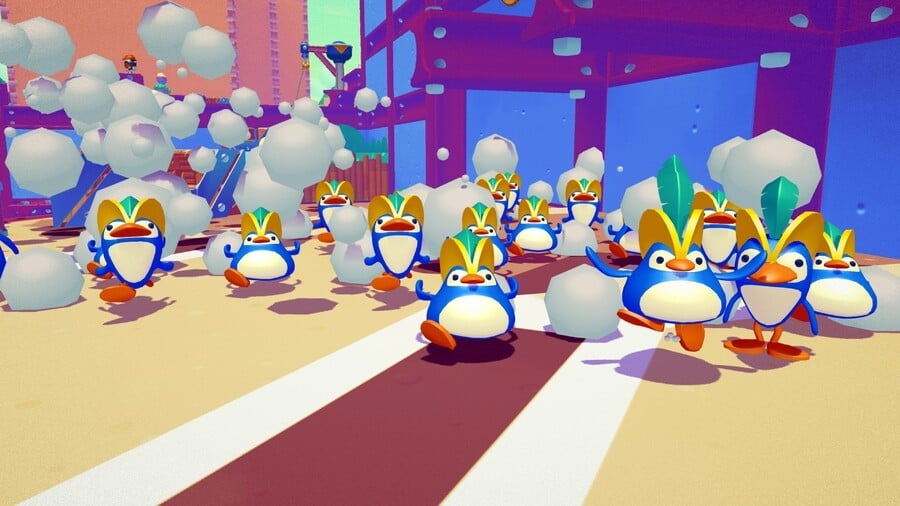
How did you come up with the idea of a yo-yo being the focal point of the gameplay?
Hunter: It’s quite funny because it’s one of those nebulous ideas that we had floating around where we thought “Wouldn’t it be cool if there was a character with a yo-yo”, especially with this idea of using the yo-yo to throw your character around using momentum in different directions.
We had a lot of experience with various platform games and loved the sense of flow you had when controlling your momentum. So we always thought that would be a cool general idea. This even predates our founding of Evening Star in some ways; not in a concrete way, but I think every developer has this kind of idea floating around that might be cool to execute one day.
Fast forward a bit, we’d been working on the engine tech for a couple of years and gained a few more people on staff. We started coming up with ideas for an original IP that would make sense for us. This yo-yo idea had percolated among other members of our team, and Esteban Fajardo (Game Designer) spent a little while coming up with numerous things that you could do with a yo-yo. Kieran Gates (General Artist) then saw that and came back the next day with way more stylised poses of a faceless dummy character with the yo-yo. As soon as everyone saw this, we just thought “We have to do this now”.
After that, we came together on what inspires everybody on the character front and what we wanted to avoid, then Tom really spearheaded the effort to come up with the Penny character. Later on, with the yo-yo specifically, we had to contend with the idea that the string would constantly wrap around objects all the time and that might get a bit hairy with regards to CPU and managing the string. Christian was the one who came up with the idea of the yo-yo having a mouth that could simply grab onto things.
From that was born the idea of the yo-yo being its own character, so we really see the yo-yo as being kind of a dog-like creature.
Christian: The yo-yo is kind of a chaotic entity; the very first comment I made was that the yo-yo has an appetite for getting you into trouble, and that led you into the scenario in which Penny goes to audition in front of Eddie the Emperor and the yo-yo basically just gets really hyped up and strips off Eddie’s clothes. He’s just constantly on the lookout for food and thinks Eddie looks like a tasty snack.
Penny’s Big Breakaway is definitely not like your traditional 3D platforming collectathon; you’re encouraged to make acrobatic actions and continually carve your path through.
We really wanted Penny’s Big Breakaway to be a character-driven story and explore Penny’s motivations as a performer and link that to the player. From a gameplay perspective, Eddie’s army of Penguins are essentially after Penny and act as a kind of pressure point to keep you moving through the world.
Penny’s Big Breakaway is definitely not like your traditional 3D platforming collectathon; you’re encouraged to make acrobatic actions and continually carve your path through. The Penguins are always on the lookout for Penny and serve to not only keep you moving forward but to allow for an easier target for Penny thanks to the mob mentality.
How is the game structured? Is it level based or more of an open-ended journey?
Hunter: So the game has a Story Mode and a Time Attack Mode. The Story Mode really follows Penny’s journey as she goes through the world of Macaroon. The game progresses in a linear fashion, so you go through the first world series of levels, and so on, and some of the worlds will feature a boss battle. There are a lot of cutscenes that we’ve worked on too; really cute and touching cutscenes in which Penny discovers her place in the world while keeping out of trouble.
You have the goal of getting through each level one by one and we really tried to keep that sense of momentum. So rather than getting kicked out into a map after each level, you’ll go through each one automatically after completion. That said, there is still a map screen available so you can replay levels you’ve already completed.

We also have the denizens in the world, so there are a lot of people roaming about the levels; Penny’s really trying to build herself up as a performer and gain an audience, so she can essentially help out the denizens of the land and recruit them to be your fans, so they’ll show up at the end of the level and watch Penny’s performance. There are also collectibles that we call “Showpieces”, and they’re little coin pieces that you can pick up, so these will be extra collectibles that you can hunt for if you’re after a more difficult platforming challenge.
Then of course, Time Attack Mode features no checkpoints, so you have to get through the level as fast as you can. There’s always that sense of momentum; the Story Mode has a few more opportunities for a completionist playstyle, while the Time Attack Mode is more for people who want to see how fast they can blast through the levels.
Is there anyone on the team who’s proven particularly proficient in the Time Attack Mode so far?
Christian: Hunter’s definitely one of the top players, he’s got the top tech strats!
Hunter: I’m sure when the game comes out, though, there will be plenty of players across the world who will be able to best me in Time Attack. It was much the same on Sonic Mania; I’m excited to see some of the pro-level tech that people come up with.
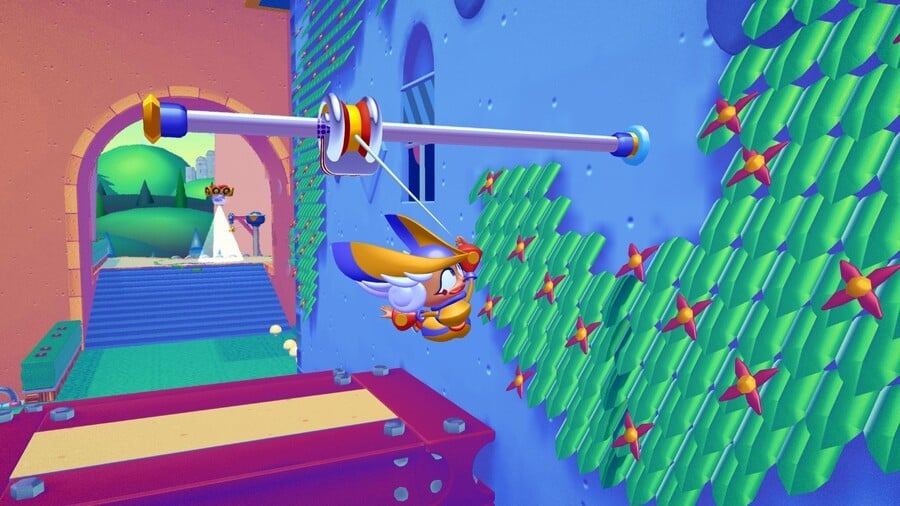
Can you talk a bit about the soundtrack for the game?
Christian: It’s got a cool soundtrack led by Tee Lopes (Sonic Mania, Streets of Rage 4, Teenage Mutant Ninja Turtles: Shredder's Revenge) again. It’s very different from Sonic Mania; it’s got some very vintage synth stuff, but mixed with a turn-of-the-millennium Fatboy Slim remix vibe, and it’s a lot of fun.
I really tried to push the team in different directions to achieve a new sound that hadn’t been done before. Even Hunter and I have contributed a couple of tracks, and Sean Bialo (Donut Dodo) has done a couple of tracks too. I’m very excited to demo the soundtrack in the coming months.
Are you able to confirm what you’re currently targeting on Switch with the resolution and frame rate?
Christian: We’re still in the process of optimising. We’re a studio that cares about fluidity first and foremost, so we’ll hopefully get back to you in the future when we get it locked down. Things are looking pretty good, but as game development goes, we have to test every level and make sure we’re hitting a consistent frame rate.
Hunter: Yeah, we definitely value responsive controls and fluid action, but it’s still cooking at the moment, so hopefully we’ll have more to share at a later date.
When Penny’s Big Breakaway was announced and confirmed to be in development by the Sonic Mania team, did you feel any weight of expectation after this?
Christian: With launching a new IP, it definitely weighs on your mind whether or not people will really care about the characters. We’ve been pleasantly surprised, though; people have made some wonderful fan art of Penny already so that really made me happy. Even when Sonic Mania was announced, we had no idea what the audience reaction was going to be, because Sega hadn’t done a pixel-art game in forever.
We’ve been really heartened by the positive reception so far and people seem very excited about Penny and Yo-Yo and what they have to offer.
I always try to put it out of my mind and just go with the flow. We’re really excited about it, and completing our first 3D game will be a big achievement for us. At our core, we really just want to make a game that’s fun and people enjoy playing; that was our strategy for Sonic Mania and it’s also our strategy for Penny.
Hunter: For me, the biggest fear when you announce something new is whether people are going to care about it at all because we live in a day and age where there are so many great games coming out all the time and it’s a lot of work to just turn peoples’ heads and get their attention. We’ve been really heartened by the positive reception so far and people seem very excited about Penny and Yo-Yo and what they have to offer, and that in turn makes us feel excited, too.
I think with Penny’s design too, we wanted to really take the idea of an iconic gaming mascot from the ‘90s and give it to today’s generation of players. So people in the 2020 generation of gamers will hopefully see Penny as something similar and make it their own.
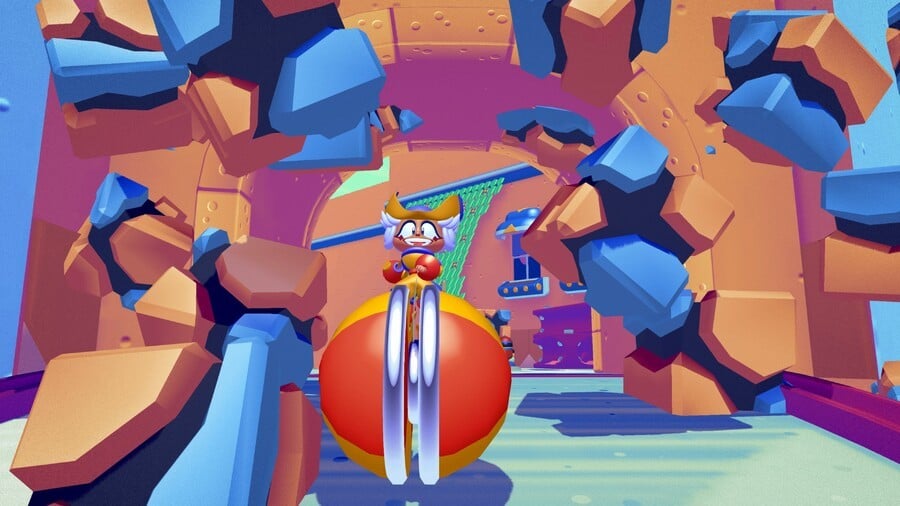
Hypothetically, now that you’re moving into the 3D space, would you ever want to create a 3D Sonic game?
Christian: I really love 3D Sonic. Sega’s got Sonic Team and they’re really doing a fantastic job with the latest 3D Sonic series, so I reckon they’re probably doing okay on their own. Personally, I really loved Sonic Jam on the Saturn and I would love to see a polygonal Sonic doing something similar to the Sonic World section, but that’s really just me being a fanboy, it’s not anything serious.
Hunter: Yeah, it would really just depend on what opportunities come up; Sonic is Sega’s IP of course!
And finally, what’s you’re Game of the Year for 2023 so far?
Christian: I want to give a shout-out to Pizza Tower. That game is so fun and I love the art style; it’s a fast-paced platformer in a totally different way. We’ve been talking about momentum and this is really just about charging at full pelt and going nuts, so yeah, that’s a really cool game.
Hunter: I’m going to go down the predictable route and say The Legend of Zelda: Tears of the Kingdom. With open-world games, I tend to struggle to stay on board, but with Tears of the Kingdom, the building mechanics are very captivating and it’s really drawn me in a lot more than other open-world titles. You can just spend hours and hours building silly things and it’s also a technical marvel how much they’ve been able to achieve on the Switch hardware.
This interview has been lightly edited for clarity.
We want to extend our sincere thanks to Evening Star's Hunter Bridges and Christian Whitehead for taking the time to speak with us. Penny's Big Breakaway is currently scheduled to launch on Switch in early 2024.





Comments 46
Hm...
I will observing this game first. 🤔
Not sure I will like this 3D platformer game.
I liked what I saw in the Nintendo Direct, this game has my interest.
This game is giving me Mischief Makers vibes for some reason.
Penny kinda has a similar aesthetic to Marina from that game.
Looks cool. Will definitely try it out.
Consider me all on board for it.
Always happy for more solid 3D platformers. With Yooka Laylee, Hat in Time, etc, we’re in a wonderful period of the indie community providing us what many of the AAA studios won’t (outside Nintendo, of course). Sonic Mania was awesome, so I’m looking forward to this
The aesthetic reminds me of a Treasure game we never got or something, which is nothing but good. This and Mina the Hollower are my two most anticipated games rn.
Looks promising! And it feels like they care a lot for optimising their game which is not a given these days.
I'm still keeping my eye on the game, looks promising.
The main character design is awful. Hopefully it has some fine-tuned gameplay/performance, Sonic Mania was a great game.
Sonic Superstars Killer, mark my words!
I wish these guys the very best of luck.
I hope this turns out as good as it looks! I agree with others it’s got a very cool Treasure vibe. I’m really on board with what I’m seeing so far.
Unfortunately don’t like the playable character’s design. Feels all over the place.
It looks really good and as a N64 aficionado I hope the physics match up. I think Penny captures the aesthetic of the N64 protagonists as well. Very Mischief Makers like.
With a title like “We have to do this now,” you’d think this is a make it or break it game for Headcannon, when it was just when the team thought a yo-yo would be a great tool for combat and movement
This game looks hella fun! X) can't wait to play it when it comes out!
I'm warming up to the art style. The gameplay has looked amazing from the beginning.
I'm glad they're not taking some kind of open-world route. You'd think that'd be out of the question for a game like this, but given some of the games that have gone open-world lately I think nothing will surprise me anymore.
Even after nearly 100 hours in tears of the kingdom, Mania is still my most played game on my switch. I hear Christian Whitehead and I'm in. All the better that Tee Lopes is doing the music. As far as I'm concerned that money is already spent.
Game looks great but still not a fan of pennys design
This looks great 👍 love the art style and fidelity. Will be definitely watching this one.
As others have already said, I'm also not a fan of Penny's design. It's too busy and doesn't have a clean and iconic silhouette (in my opinion). That said, in context of the rest of the art direction, there is a heavy Treasure influence, which I can totally get behind. Treasure has made many of my all-time favorite games in terms of gameplay, visuals, and replayability, so I can't help but be excited to see the Mania devs looking to them for inspiration. Mania is my absolute favorite of the classic (non-boost) Sonic games, outside of fan-modded classics like Sonic 3 AIR, so I have a lot of faith that this game could fall in among the ranks of the best games I've ever played, but for now we can only wait and chip away at the insane avalanche of fantastic games that has been rolling in.
To me this is one of the big surprises of the direct. I love good platformers and this looks pretty fun.
This game looks so playful, the world is so bouncy looking and vibrant, I need it in my hands as soon as possible!
Finally people who share my opinion that pizza tower is goty material.
@WaffleBoat I haven’t even played it and I know! I didn’t know people thought so little of the game lol.
How some character designs get the go ahead is beyond me.
Like others, I'm not a fan of the artstyle... but the platforming does look fun.
I like Penny's character design a lot. But I like the artstyle of the world even more!
I don't know everyone's problem. Who wouldn't love to play as a female manic midget with George Washington's hair.
This game looks really cool. Not a game I would play tho. But I think it's awesome.
Yeah all them characters look ugly. But the gameplay looks fun.
Reminds me of Mario 3D World and Land. I think I would like this. Also that Super Lucky's Tale games as well
Curious about this one. And thanks for the interview.
Just too bad the looks and music feel really cliche in the trailer.
This game had already piqued my interest during the Direct on its own and even more so when they announced it's from these developers, but now thanks to this interview I'm looking forward to it even more!
Isn't that too cute for that.
I'm pretty excited for this, it reminds me of Sonic Adventure.
This game was a standout in the direct. I'm really excited for it, it looks really solid
How much did this game sell? All news went dead quiet after release and it never really showed up on any charts or was talked about by any journalists/youtubers.
I like the look of the gameplay, but the protagonist appears so poorly designed and lacking in charm.
@Axecon It hasn’t been released yet, which answers most of your questions.
I keep wanting to like the design of the main character more than I currently do, but I think the fact that I’m trying so hard to like it would indicate it’s not that great. The proportions are weird, the colours don’t mesh well, the eyes are peculiar and I don’t know what that thing below her eyes but they’re distracting in the promo animations.
I can see why they saw potential in it from the concept art but it needed a lot of fine tuning. Though I think 40% of the issue can be solved by fixing the eyes.
@Supaguy Lol, could've sworn I saw a launch trailer but it was just promotional material. Hope the game does well, we need more 3D platformers!
@Axecon Agreed. I love the concept and the movement looks slick, weird character design or not, I’m interested.
One of the games I am most excited for next year. Looks like a big weird playground. The color temp and character designs remind me a lot of Dynamite Headdy...and ain't nothing wrong with that. I'm a bit bummed that the camera is not manual. I hope there's a first-person view option, even if it locks movement down. I just love looking around cool environments like these ones.
Super excited to play this. Hopefully it runs at 60fps on Switch and 90fps on OLED Deck. It looks really fun and sounds like it's going to sound awesome.
Side note: I wish Sonic games had an option to skip water levels. Running out of oxygen isn't fun. And I wish Sonic Superstars (and Monkey Ball Banana Blitz) had an option to skip boss fights! Or they could figure out how to make better water levels and boss fights (like Mario Wonder, in my opinion)
Edit: well, OK, some boss fights aren't amazing in Mario Wonder, but I still appreciate how they don't damage my enjoyment of the game (or stop me from playing the game)
Never even heard of this, but definitely going on my hope it gets a physical list
Show Comments
Leave A Comment
Hold on there, you need to login to post a comment...